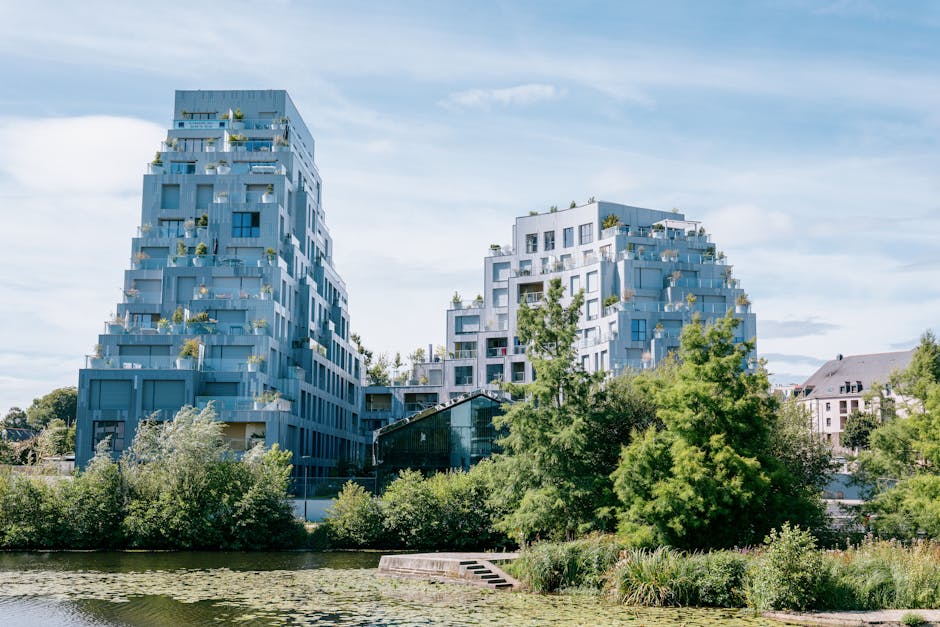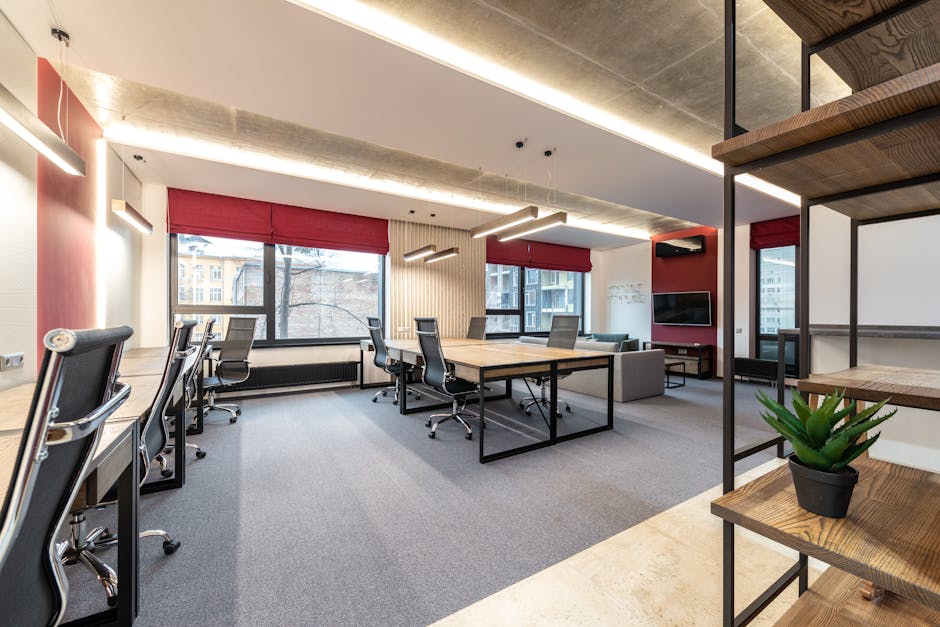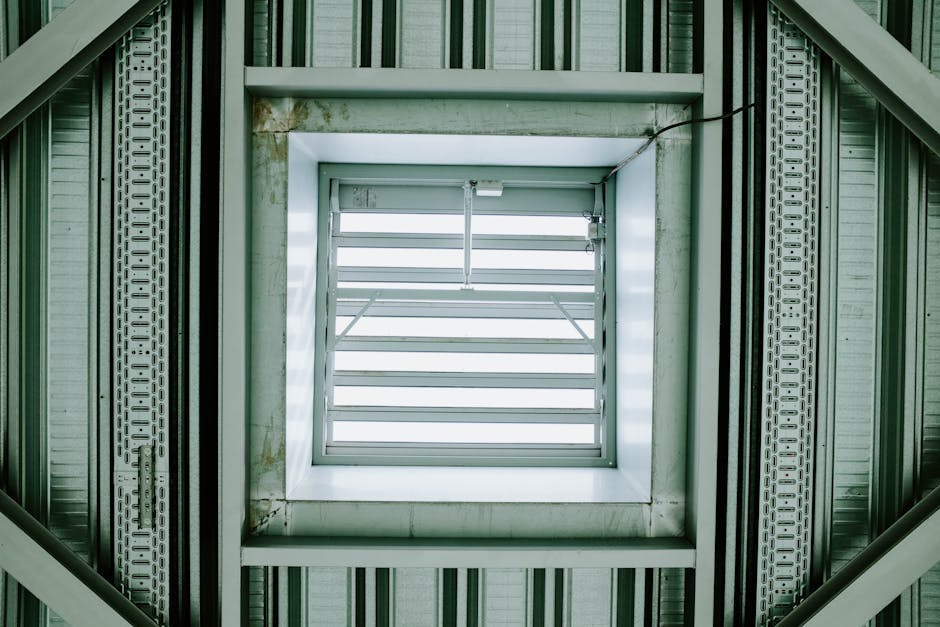Green Building: Sustainable Design Strategies for the Modern Workplace
“Green building represents a comprehensive approach to creating structures that are environmentally responsible and resource-efficient throughout their lifecycle. This article explores the core principles of green building, its benefits for organizations, key certification standards, and practical strategies for implementing sustainable design in modern workplaces. ”

Green Building: Sustainable Design Strategies for the Modern Workplace
In today's environmentally conscious world, organizations are increasingly recognizing the importance of sustainable practices in their workplace design and operations. Green building, also known as sustainable building or eco-friendly construction, has emerged as a powerful approach to creating structures that minimize environmental impact while maximizing resource efficiency throughout a building's lifecycle—from planning and design to construction, operation, maintenance, and eventual demolition.
For corporate HR managers, IT directors, facility managers, and educational institution administrators, understanding and implementing green building principles can lead to significant benefits, including reduced operational costs, improved employee wellbeing, enhanced organizational reputation, and a smaller carbon footprint.

What Is Green Building?
Green building refers to both a structure and the application of processes that are environmentally responsible and resource-efficient throughout a building's life cycle. Unlike conventional building practices that primarily focus on cost, aesthetics, and functionality, green building adds sustainability as a core consideration in every aspect of the building process.
The term "green building" encompasses structures that reduce energy use, conserve natural resources, and promote human health, all while minimizing their overall environmental impact. These buildings are designed to use resources more efficiently, create healthier indoor environments, and reduce waste, pollution, and environmental degradation.
Key Benefits of Green Building for Organizations
Economic Benefits
-
Reduced Operating Costs: Green buildings typically consume less energy and water, resulting in lower utility bills. According to the U.S. Green Building Council, LEED-certified buildings report almost 20% lower maintenance costs than typical commercial buildings.
-
Increased Property Value: Sustainable buildings often command higher rental rates and sale prices. Studies show that green-certified buildings can sell for up to 10% more than comparable conventional buildings.
-
Enhanced Productivity: Improved indoor environmental quality in green buildings has been linked to increased employee productivity. Research indicates that workers in green environments experience fewer sick days and higher cognitive function scores.
Environmental Benefits
-
Reduced Carbon Footprint: Green buildings use less energy and produce fewer greenhouse gas emissions compared to conventional buildings.
-
Conservation of Natural Resources: Sustainable design incorporates materials that are responsibly sourced, recycled, or renewable, reducing the depletion of natural resources.
-
Improved Water Conservation: Green buildings implement water-efficient fixtures and systems that significantly reduce water consumption.
Social Benefits
-
Enhanced Occupant Health and Comfort: Green buildings prioritize indoor air quality, natural lighting, and thermal comfort, creating healthier and more pleasant work environments.
-
Community Impact: Sustainable buildings often incorporate features that benefit the surrounding community, such as green spaces, improved stormwater management, and reduced heat island effects.

Green Building Certification Systems
Several certification systems have been developed to evaluate and recognize green buildings. These standards provide frameworks for designing, constructing, and operating sustainable buildings:
LEED (Leadership in Energy and Environmental Design)
Developed by the U.S. Green Building Council, LEED is one of the most widely recognized green building certification systems globally. It evaluates buildings based on criteria such as energy efficiency, water conservation, sustainable materials, indoor environmental quality, and innovation in design.
LEED certification comes in four levels:
- Certified (40-49 points)
- Silver (50-59 points)
- Gold (60-79 points)
- Platinum (80+ points)
BREEAM (Building Research Establishment Environmental Assessment Method)
Originating in the UK, BREEAM assesses a building's environmental performance across categories including energy, health and wellbeing, innovation, land use, materials, management, pollution, transport, waste, and water.
WELL Building Standard
While many green building certifications focus primarily on environmental impact, the WELL Building Standard specifically addresses how buildings affect human health and wellness. It evaluates features that impact occupant health across concepts like air, water, nourishment, light, movement, thermal comfort, sound, materials, mind, and community.
Living Building Challenge
This rigorous certification program goes beyond sustainability to require buildings to be regenerative. Living Buildings must generate more energy than they use, capture and treat all water on site, and be constructed using healthy materials.
Core Principles of Green Building Design
Energy Efficiency
Energy efficiency is a cornerstone of green building design. Strategies include:
-
High-Performance Building Envelope: Well-insulated walls, roofs, and foundations, along with high-quality windows and doors, minimize heat transfer and reduce the need for heating and cooling.
-
Energy-Efficient Lighting: LED lighting, daylight harvesting systems, and occupancy sensors significantly reduce electricity consumption.
-
Renewable Energy Integration: Solar panels, wind turbines, and geothermal systems allow buildings to generate clean energy on-site.
-
Smart Building Technology: Building automation systems optimize energy use by controlling lighting, HVAC, and other systems based on occupancy and environmental conditions.
Water Conservation
Water-saving strategies in green buildings include:
-
Water-Efficient Fixtures: Low-flow toilets, faucets, and showerheads reduce water consumption.
-
Rainwater Harvesting: Systems collect and store rainwater for non-potable uses like irrigation and toilet flushing.
-
Greywater Recycling: Water from sinks, showers, and washing machines is treated and reused for irrigation or toilet flushing.
-
Drought-Resistant Landscaping: Native plants and efficient irrigation systems minimize outdoor water use.
Sustainable Materials
Green buildings incorporate materials that:
-
Have Recycled Content: Using materials with recycled content reduces the demand for virgin resources.
-
Are Locally Sourced: Local materials reduce transportation emissions and support regional economies.
-
Have Low Environmental Impact: Materials with low embodied energy and minimal environmental impact during extraction, manufacturing, and disposal.
-
Are Durable and Long-Lasting: Materials that require less frequent replacement reduce waste and resource consumption over the building's lifetime.

Indoor Environmental Quality
Creating healthy indoor environments involves:
-
Optimal Ventilation: Mechanical and natural ventilation systems ensure adequate fresh air circulation.
-
Low-VOC Materials: Paints, adhesives, sealants, and furnishings with low volatile organic compound (VOC) emissions improve air quality.
-
Access to Natural Light: Daylighting strategies reduce the need for artificial lighting and provide psychological benefits to occupants.
-
Acoustic Comfort: Sound-absorbing materials and strategic space planning minimize noise disruption.
Implementing Green Building Strategies in Your Workplace
For Existing Buildings
-
Energy Audit: Conduct a comprehensive energy audit to identify opportunities for improvement.
-
Retrofit Opportunities: Replace outdated systems with energy-efficient alternatives, such as LED lighting, high-efficiency HVAC systems, and smart controls.
-
Waste Reduction: Implement comprehensive recycling and composting programs to divert waste from landfills.
-
Green Cleaning Practices: Use environmentally friendly cleaning products and methods to improve indoor air quality.
-
Occupant Education: Develop programs to educate building occupants about sustainable practices and encourage behavior changes.
For New Construction
-
Integrated Design Process: Bring together architects, engineers, contractors, and end-users early in the design process to collaborate on sustainability goals.
-
Site Selection: Choose locations that minimize environmental impact, are accessible by public transportation, and preserve natural habitats.
-
Building Orientation: Orient the building to maximize natural light and passive solar heating while minimizing cooling loads.
-
Biophilic Design: Incorporate natural elements like plants, natural materials, and views of nature to improve occupant wellbeing and connection to the environment.
-
Future-Proofing: Design for adaptability and flexibility to accommodate changing needs and technologies over time.
Technology's Role in Green Building
Technology plays a crucial role in optimizing building performance and sustainability:
-
Building Information Modeling (BIM): Digital modeling tools help simulate and optimize building performance before construction begins.
-
Internet of Things (IoT): Connected sensors and devices monitor and control building systems in real-time, optimizing energy and resource use.
-
Artificial Intelligence: AI algorithms analyze building data to identify patterns and opportunities for improved efficiency.
-
Energy Management Systems: Sophisticated software platforms track and manage energy consumption across building systems.
-
Digital Twins: Virtual replicas of buildings allow for ongoing optimization and scenario testing without disrupting operations.
Case Studies: Successful Green Building Implementations
The Edge, Amsterdam
Often cited as the world's most sustainable office building, The Edge achieved the highest BREEAM score ever recorded (98.36%). The building features:
- 28,000 sensors that monitor occupancy, movement, lighting levels, humidity, and temperature
- A solar panel array that produces more electricity than the building consumes
- An app that helps employees find parking spaces, available desks, and even colleagues
- A system that recognizes users' smartphones and adjusts lighting and temperature to their preferences
Bullitt Center, Seattle
Known as the "greenest commercial building in the world," the Bullitt Center is designed to be net-positive energy and water, meaning it generates more energy and captures more water than it uses. Features include:
- A 575-panel solar array that produces 60% more energy than the building consumes
- Composting toilets that use no water
- A rainwater collection system that provides all the building's water needs
- Operable windows and an automated system that tells occupants when to open or close them for optimal comfort and efficiency
Challenges and Considerations
While the benefits of green building are substantial, organizations may face challenges in implementation:
-
Initial Cost Concerns: Green building features can sometimes increase upfront construction costs, though they typically result in long-term savings.
-
Technical Complexity: Implementing advanced sustainable systems may require specialized expertise.
-
Regulatory Navigation: Understanding and complying with green building codes and certification requirements can be complex.
-
Occupant Behavior: The most efficient building systems can be undermined by occupant behaviors that waste resources.
-
Measuring Success: Establishing meaningful metrics to evaluate the performance of green building initiatives can be challenging.
Conclusion: The Future of Green Building
Green building is no longer just a trend—it's becoming the new standard for responsible construction and office space optimization. As climate change concerns intensify and organizations increasingly prioritize sustainability, we can expect green building practices to become even more mainstream.
Future developments in green building will likely include:
-
Net-Zero and Net-Positive Buildings: More buildings will aim to produce as much or more energy than they consume.
-
Circular Economy Principles: Buildings will be designed for disassembly and material reuse at the end of their life cycle.
-
Resilience to Climate Change: Green buildings will incorporate features to withstand extreme weather events and changing climate conditions.
-
Health-Focused Design: Increasing emphasis on how buildings affect occupant health, particularly in light of lessons learned from the COVID-19 pandemic.
-
Integration with Smart Cities: Green buildings will connect with broader urban systems for energy, water, and transportation.
By embracing green building principles, organizations can create workplaces that not only reduce environmental impact but also enhance employee wellbeing, reduce operational costs, and demonstrate leadership in sustainability. Whether you're renovating an existing facility or planning new construction, incorporating green building strategies is an investment in both the planet and your organization's future.
As we move toward more collaborative workspaces and activity-based workplace models, green building principles can complement these approaches, creating environments that are not only flexible and productive but also sustainable and healthy.